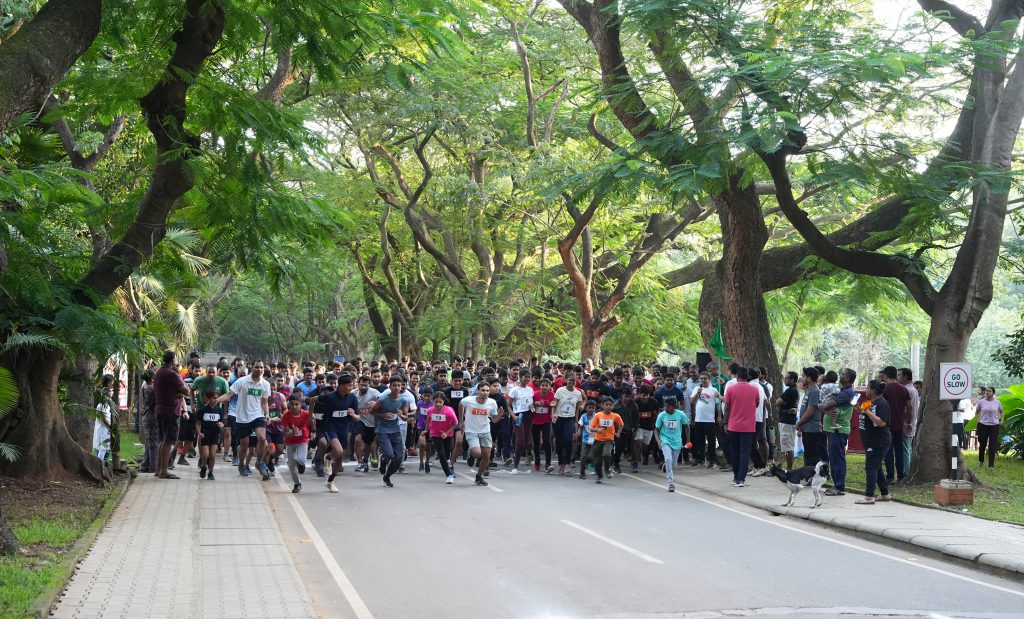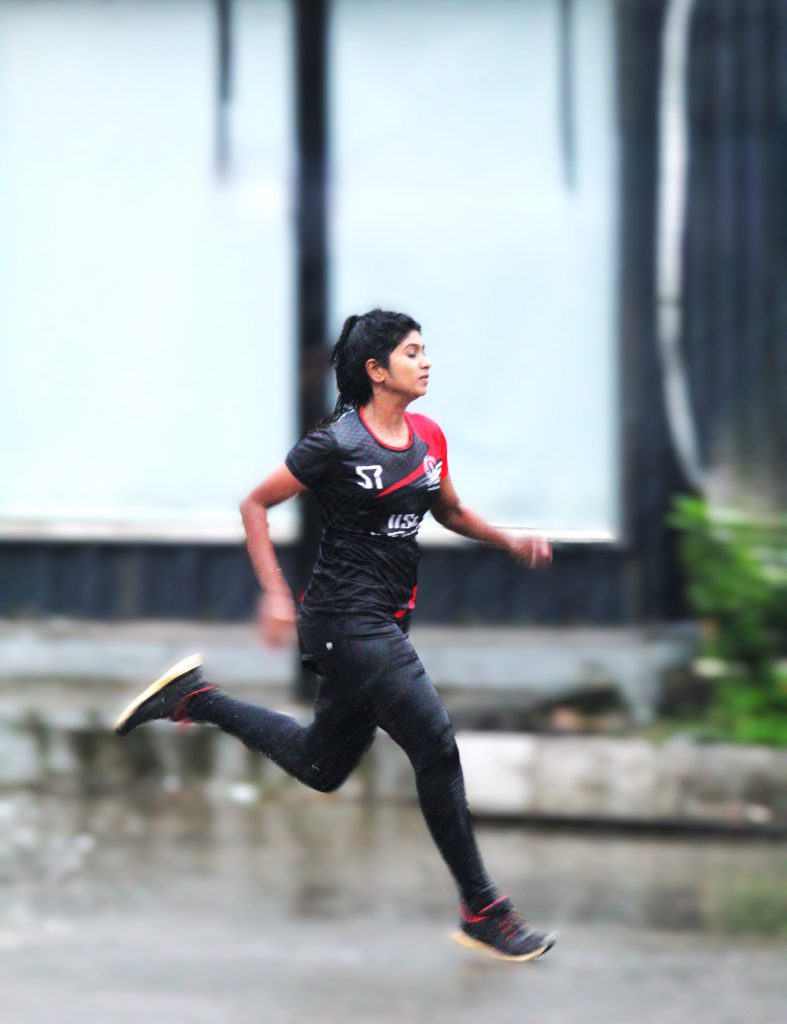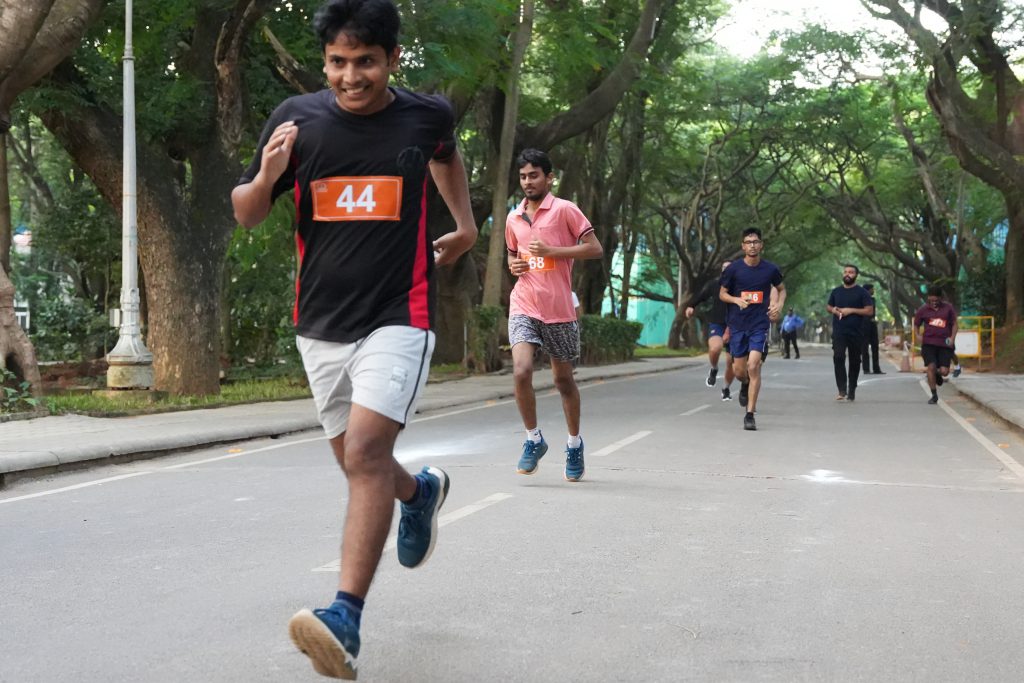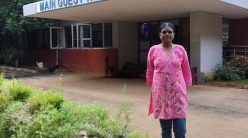Researchers on campus talk about why they run

It was 6 am. The unrelenting blare of the alarm jolted me awake. An alluring voice in my head, forceful and convincing, suggested that I go back to sleep, the world can wait. But with Herculean effort, I heeded the other steely voice in my mind. “Just brush your teeth. If you’re still groggy you can always go back to sleep,” it said. One step at a time. I was out of my bed and off for a run.
The campus, usually quiet at this hour, was abuzz. Over 200 runners were gathered near the Main Building. Flags fluttered and cries of Jai Hind reverberated as the start of the Freedom Run, an annual event hosted at IISc on Independence Day, loomed. The four-kilometre run under the canopy cover on campus is a scenic one.
Over the years, the long, winding campus roads and facilities such as the Gymkhana ground had enticed many students and faculty members to take up running, either as a hobby or as a competitive sport. This race was a blue riband event on their running calendar.
After collecting my race number, I took my place at the starting line. Runners around me stretched and adjusted their gear. Nervous smiles were exchanged as anticipation heightened.
When the run was finally flagged off, a sea of humanity bolted, the first kilometre of the run moving from the Main Building to the Department of Mechanical Engineering via the food truck road. Many slowed down to a walk at the Silver Oak Marg, which was a climb, unable to keep up the pace. Experienced runners, who had initially lagged behind the enthusiastic beginners, glided on at a steady pace.
The four-kilometre Freedom Run, under the canopy cover on campus, is a scenic one
The runners spanned a wide range in age and experience. Even school kids were running alongside IISc students and faculty members, some experiencing their first tryst with a four kilometre run. Just ahead of me was Supratim Ray, a faculty member and seasoned runner with over a decade of experience.
A Professor at the Centre for Neuroscience, Supratim started running in 2003. He also plays badminton, table tennis, and football, but running has his heart. “Running is something that I can do by myself,” he explains.
He caught the running bug during his PhD days in Baltimore, USA. He finished his first marathon, a distance of 42 kilometres, at three hours and 58 minutes, two minutes under his target of four hours. His second attempt aimed at qualifying for the famed Boston Marathon. The first half of the race went according to plan, but in the second half, he “hit the wall”, a phrase in running parlance that refers to physical and mental fatigue. He also picked up an injury along the way, which ended his hopes of making the Boston Marathon qualifying time. But he remained undeterred. Since joining IISc a year later, Supratim has taken part in two Ultra Marathons, more challenging than full marathons, in 2012 and 2013.
“Running helps with breathing and that can bring about a lot of changes in the body and mind,” explains Supratim. “Running regularly requires discipline which also translates to better work management.”

As I struggled with the uphill climb at the Silver Oak Marg, Supratim pushed on with ease. The race slowly moved on along Tala Marg, before another uphill segment at Madhura Marg. There, I came across Monica Alfred Henry, an alumnus of the Molecular Biophysics Unit. I first met Monica at Spectrum, IISc’s annual sports meet, in 2022 after my 100 m race, when she came over to congratulate me. It had spawned a long friendship.
Monica’s relationship with running goes back to her childhood. “My father used to take me and my brother running at 5 am during school vacations when I was just six years old,” she reminisces. Initially, she didn’t enjoy it but she still ran, looking forward to the post-run treats. “It was difficult for me, but I enjoyed what followed it, like the time of rest, good food, and even some consequent rewards like becoming a sports champion in my school early on,” she admits.

Her running habit took a hit during her high school years, but she resumed it after joining IISc. Balancing running with research proved challenging. “The progress was slow but the consistency was rewarding,” she remembers. She gradually built up to running 3-4 times a week, starting with 15-20 minute sessions. She learned to incorporate running into her life by adjusting the intensity and duration based on her work and research schedules.
“Research in IISc is very demanding. Running is like a reset where you have nothing in mind but just to finish your workout goal for the time. That helps in the renewed start of the work,” says Monica. “The real reward is witnessing it [running] translated into all other spheres. I took my PhD thesis writing process as a 400m race. The last phase of writing and submission is like the final 100m in the race. Though you are exhausted, you keep up the pace and cross the finish line, and that’s how I did it!”

Monica and I ran side-by-side for a while, motivating each other. Her company through the challenging segment of the run distracted me from my aching legs and we made it to Gulmohar Marg together.
The flat terrain flanked with trees was a welcome change as was the downhill incline towards the D gate. We moved on to the bank road, a daunting uphill climb. I took a walking break of about a minute and made it up the slope. The race was almost over – just one left turn towards the library and the finish line was at the Main Building. I finished the race at a canter, feeling elated as I pulled ahead of the tired runners.
At the flag march after the race, I met some of my friends including Prem Singh Anant, a PhD student at the Department of Bioengineering.
Prem’s journey as a runner had begun unexpectedly in his 12th standard. It was his classmates’ reluctance, some of whom were national-level runners, in participating in the inter-house competition that opened the door for Prem to participate and win. It proved to be a turning point.
“I felt that I could run too,” Prem recalls.

Where most recreational runners lean towards distance running, Prem found his calling in sprinting. It matched his personality, he felt a thrill in the short and intense burst of speed. It satiated his competitiveness. “I enjoy pushing my limits in a brief timeframe, and the quick recovery periods keep me engaged and motivated. It allows me to express my athleticism and provides an enjoyable challenge that longer runs don’t offer to me,” he explains.
He continued pursuing it during his Bachelor’s studies and took part in college meets. When he joined IISc, he became the convener of the Athletics club, which unites runners on the campus by holding training sessions for the IISMs (Inter IISER Sports Meets), and the track and field events of Spectrum.
“A sprinting competition lasts for less than a minute but requires a lot of discipline and focus for that duration. It helped me become disciplined,” Prem admits, adding that it makes him more productive at work.

The Independence Day run was my first road race. Until then, I had only been running at the Gymkhana grounds to avoid the hard surface of the roads.
Running on roads for long periods is fairly damaging to the body, especially the knees. Supratim, while training for his races, used to do 50 laps around the track at the Gymkhana. “I don’t mind the repetition,” he explains.
However, to me, running in a loop feels monotonous. The Independence Day run made me realise how beautiful and refreshing running on the roads of IISc can be.
The campus roads offer a delightful variety for runners. From relatively flat roads to climbs and descents, there is something for everyone. There are also short trails through the overgrowth and wooded areas.
“The canopy of trees, serene paths, and fresh air make it [IISc] a runner’s paradise. Every runner dreams of such a perfect green environment,” Gaurav Sharma, Assistant Professor at IIT Hyderabad, had once posted on the social media platform X.
The campus roads offer a delightful variety to runners, from relatively flat roads to climbs and descents
For time-targeted runs, the diverse roads keep runners engaged. Running under the canopy-covered roads with sunlight streaming through and birds chirping is a great way to start the day. Besides a few threatening growls from stray dogs, things are usually smooth. Evening runs, with lights put up for Pravega, the UG fest, and fireflies guiding the way, are also immensely popular.
Be it chasing down a sub-three-hour marathon or beating the morning blues, running offers a perfect respite from research. The health benefits that come with it are a bonus, especially for researchers who work hard in labs all day. The famous Alan Turing used to be an avid runner and ran consistently while trying to crack Enigma during the Second World War.
For me, personally, beyond the runner’s high, running has always helped me clear my mind and get through the day better. It has also helped me forge enduring friendships that I will cherish for a lifetime.
Sindhu M is a PhD student in the Department of Bioengineering, IISc and a former science writing intern at the Office of Communications




